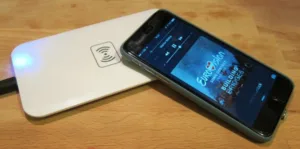ABI Research expects the Wireless Power Consortium’s Qi specification to remain dominant through 2020. ABI expects 713 million Qi chargers to be shipped by the end of 2020, compared to 213 million Powermat/Rezence chargers (controlled by the Alliance for Wireless Power – A4WP).
Qi is an inductive power standard, capable of transferring up to 15W of power. It also has a new resonant mode, however, which is also the basis for the A4WP’s Rezence technology. Resonant charging has a longer range than induction charging and can send power to multiple devices at once.
ABI expects wireless power to become more widely known, thanks to the investment by large companies such as Samsung, Broadcom and Microsoft (these are members of the WPC and A4WP). However, companies must be clear about which specification their products support. For example, Samsung’s Wireless Charging Pad is Qi-only. This product gave Qi a significant boost in the direct-to-consumer space, as have the ‘thousands’ of public charging stations based on the specification – compared to hundreds for Powermat.
ABI expects that Samsung will eventually drop its support for the Powermat technology, in favour of Qi.
“Early awareness is being driven by the incorporation of wireless charging capabilities into smartphones, which will account for around 84% of all wireless charging receivers by the end of 2015”, said ABI’s Shelli Bernard. “Since many smartphone OEMs to date have not bundled wireless chargers alongside handsets, the number of wireless charging-ready devices have outpaced chargers. As awareness grows and as prices for chargers fall, the number of chargers per active user should grow, helping to work towards closing this divide”.

